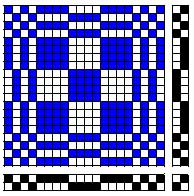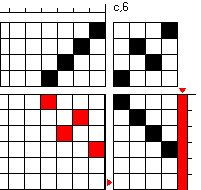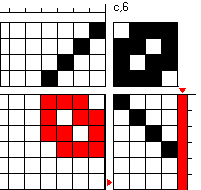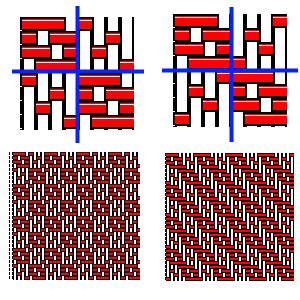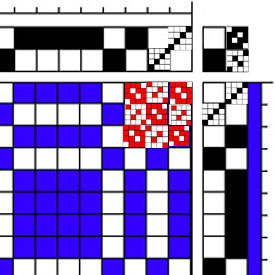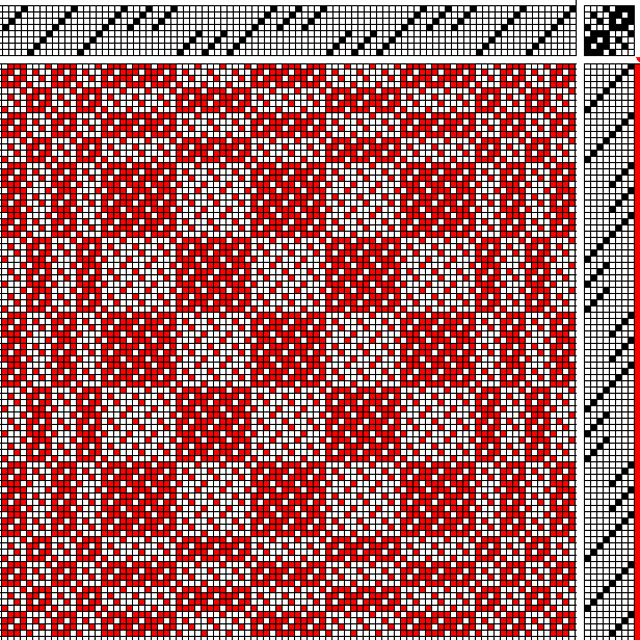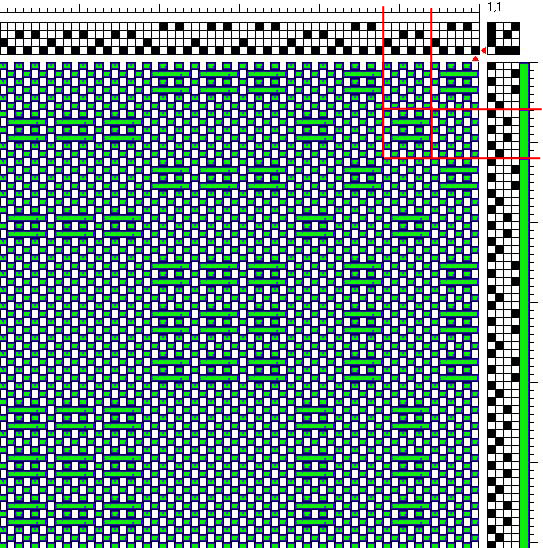But let us first look at a different interpretation of the profile draft.
We could choose a lace weave - the result could be a curtain, perhaps?
In this case we let each square from (profile) shaft 1 represent 6 ends threaded 4-1-4-1-4-3 and each square
from (profile) shaft 2 represent 6 ends threaded 4-2-4-2-4-3.
Do the same for the treadling order.
As we can see, every other end is threaded on either shaft 4 or shaft 3 - as we have 2 (pattern) blocks, we
only need 4 shafts for this pattern.
(Yes, the shafts are numbered "the Swedish way" - this doesn't matter, numbers are unimportant,
just look at the diagram: the shaft nearest the weaver is the shaft nearest the weaver, regardless of what
we choose to call it. We could call it 1, 4, grandfather or Miss Muffet...)
There are many more possibilities fo how to interpret the profile pattern - for some other suggestions see
"about profile patterns" and
"more about profile patterns".
So, is it
necessary to write a thread-by-thread diagram?
Sometimes, perhaps it is - for example if one is making a "recipe" for others to follow, or if one
has a complicated pattern with many colours, or...
Often we can find threadings looking like this (still based on the profile above):
Sometimes, if we want (for example) two more big squares in the pattern above, there can be one more line:
This method saves space, but is not always very easy to follow when sitting at the loom, threading...
A different way of thinking is to just follow the block threading.
Compare the first example above: the block pattern, completed with a note saying "use 4-shaft broken
twill" would be perfectly adequate, if we know how to thread, tie-up and treadle a broken twill.
For the lace example, we may want to be a little more explicit: "one square = 6 ends",
possibly with the addition
"block 1 is threaded 4-1-4-1-4-3, block 2 is threaded 4-2-4-2-4-3"
In the (Swedish) books this is often referred to as having "different threading units" for different
bindings (structures). (Note: this is different from the "unit weaves" of, for instance M
v d Hoogt - the Swedish definition is more open than hers.)
Myself, I find it much easier to use a notation like this last than to have a very long line of many squares -
a long threading diagram that I have to break into logical "handling" units.

